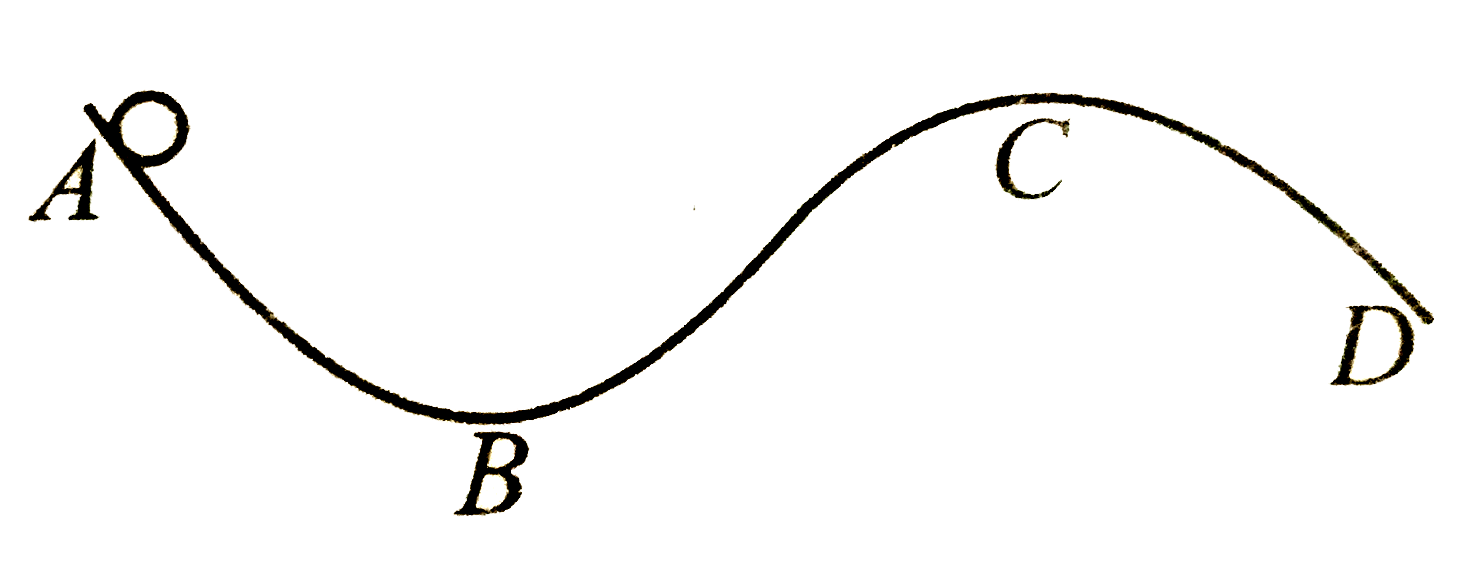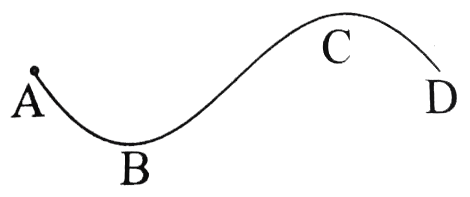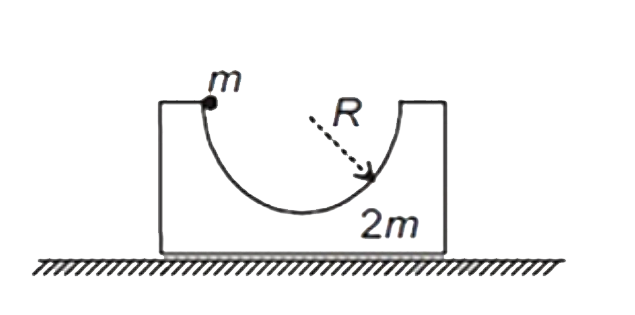A curved surface is shown in figure. The portion BCD is frictionless. There are two spherical balls of identical radii and masses. Balls are released from rest one by one from A which is at a slightly greater height than C. With the surface AB ball 1 has a small friction and ball 2 has a negligible friction. For which balls is total mechanical energy conserved?

(a) As ball 1 is rolling down without slipping there is no dissipation of energy, hence total mechanical energy is conserved.
(b) Ball 1 acquires rotational energy, ball 2 loses energt by friction. They cannot cross at C. Ball # can cross over.
(c ) Balls 1 and 2 turn back before reaching C. Because of loss of energy, ball 2 cannot reach back to A. Ball 1 has a rotational motion in wrong sense when it reaches B. It cannot roll back to A because of kinetic friction.
Topper's Solved these Questions
- BOOK - CENGAGE PHYSICS ENGLISHCHAPTER - CENGAGE PHYSICS DPPEXERCISE - Single Correct Answer type491videos
CENGAGE PHYSICS DPP
- BOOK - CENGAGE PHYSICS ENGLISHCHAPTER - CAPACITOR AND CAPACITANCEEXERCISE - Integer5videos
CAPACITOR AND CAPACITANCE
- BOOK - CENGAGE PHYSICS ENGLISHCHAPTER - COULOMB LAW AND ELECTRIC FIELDEXERCISE - Single Answer Correct Type22videos
COULOMB LAW AND ELECTRIC FIELD
Similar Questions

A curved suface is shown in figure. The portion BCD is free of friction. There are three spherical balls of identical radii and masses. Balls are released from rest one by one from A which is at a slightly greater height than C.
Wioth the surface AB, ball 1 has large enough friction to cause rolling down without slipping, ball 2 has a small friction and ball 3 has a negligible friction.
(a) For which ball is total mechanical energy conserved?
(b) Which ball(s) can reach D?
(c )For ball which do not reach D, which of the balls can reach back A?View SolutionTwo identical balls A and B are released from the position shown in Fig. They collide elastically with each other on the horizontal portion. The ratio of heights attained by A and B after collision is (neglect friction)
 View Solution
View Solution
Knowledge Check
- Question 1 - Select One

A curved suface is shown in figure. The portion BCD is free of friction. There are three spherical balls of identical radii and masses. Balls are released from rest one by one from A which is at a slightly greater height than C.
Wioth the surface AB, ball 1 has large enough friction to cause rolling down without slipping, ball 2 has a small friction and ball 3 has a negligible friction.
(a) For which ball is total mechanical energy conserved?
(b) Which ball(s) can reach D?
(c )For ball which do not reach D, which of the balls can reach back A?A1 and 2B1C2DCannot be predicted - Question 2 - Select One
Two identical balls A and B are released from the position shown in Fig. They collide elastically with each other on the horizontal portion. The ratio of heights attained by A and B after collision is (neglect friction)
 A1:4B2:1C4:13D2:11
A1:4B2:1C4:13D2:11
There are 2 identical white balls, 3 identical red balls, and 4 green balls of different shades. Find the number of ways in which they can be arranged in a row so that atleast one ball is separated from the balls of the same color.
View SolutionA small ball of mass m is released from rest from the position shown . All contact surface are smooth . The speed of the ball when it reaches its lowest position is
 View Solution
View SolutionA small ball of mass m is released from rest from the position shown . All contact surface are smooth . The speed of the ball when it reaches its lowest position is
 View Solution
View SolutionFigure shows a flat car of mass M on a frictionless road. A small massless wedge is fitted on it as shown. A small ball of mass m is released from the top of the wedge, it slides over it and falls in the hole at distance l from the initial position of the ball. Find the distance the flat car moves till the ball gets into the hole.
 View Solution
View SolutionThere are two bags each of which contains n balls. A man has to select an equal number of balls from both the bags. Prove that the number of ways in which a man can choose at least one ball from each bag is2nCn−1.
View SolutionA solid sphere is released from rest from the top of a curved surface as shown in figure. Half portion of surface is rough and another half is smooth. If sphere is released from rough side, then the maximum height attained by it on smooth side is (Rough surface has sufficient friction to roll the body)
View Solution
